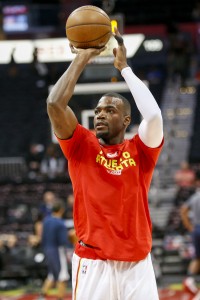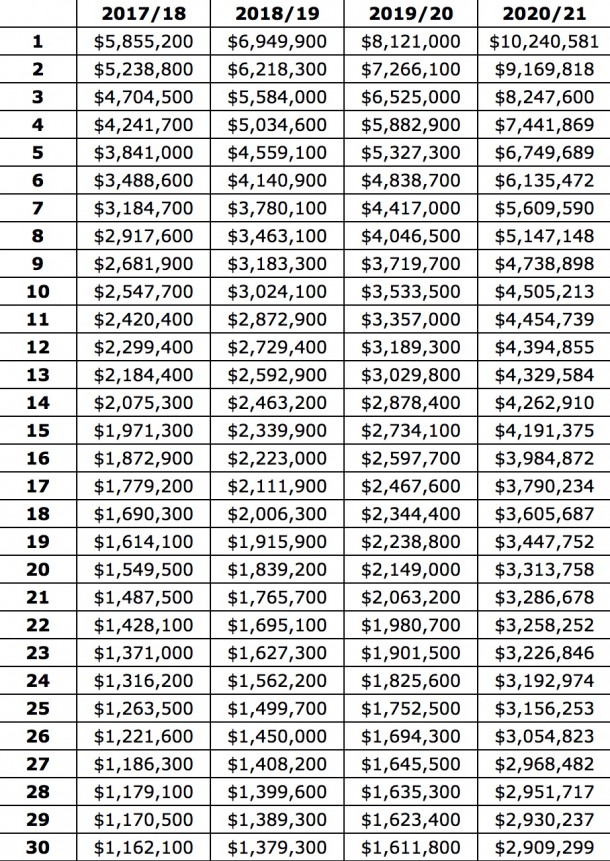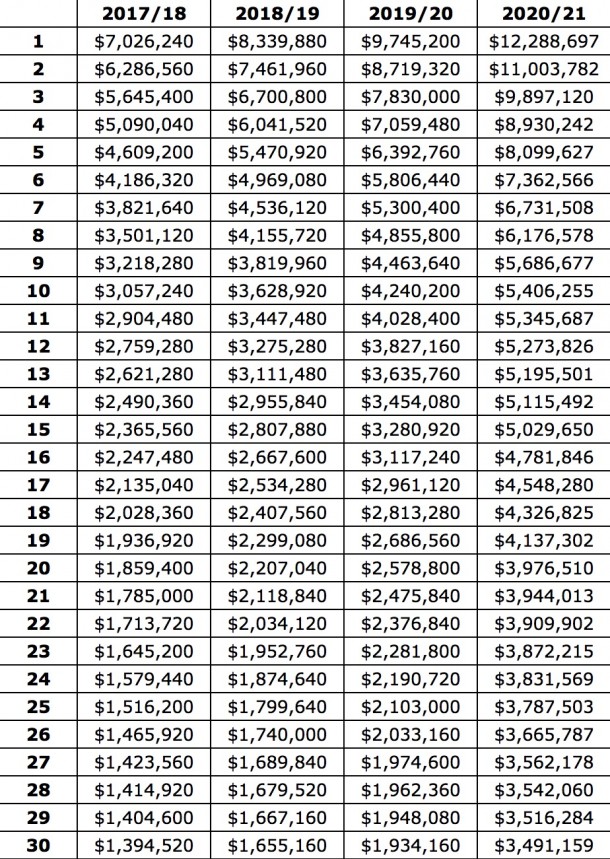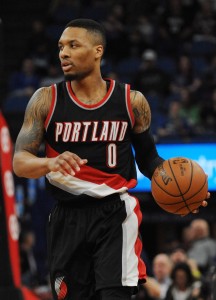With the 2016/17 season officially coming to an end for most teams, the focus in many NBA cities has shifted to the upcoming offseason, with big-name free agents dominating discussion. Most recently, the Cavaliers’ series win over the Raptors generated far less speculation about how Cleveland will match up with its possible opponents in the Eastern Conference Finals than it did about the futures of Kyle Lowry, Serge Ibaka, and the Raptors.
While sign-and-trade deals may make sense in theory, the NBA’s Collective Bargaining Agreement makes them tricky in reality, particularly for elite free agents. Here are a few reasons why:
Under the old CBA, a sign-and-trade deal allowed a player to sign for the true max – in terms of total years and annual raises – even though he wasn’t remaining with his previous team. That’s no longer the case.
If, for instance, the Raptors were to sign-and-trade Lowry to another club, he wouldn’t be able to receive the five years or 8% annual raises that he would if he re-signed with Toronto — he’d still be eligible for the same starting salary, but would be limited to four years and 5% raises, reducing the overall value of his max contract by about $50MM.
2. Teams with cap room can sign a player outright without giving up assets in a sign-and-trade.
Let’s use Lowry as an example again and suppose that he doesn’t get an offer he likes from the Raptors. In that scenario, perhaps a team like his hometown Sixers makes a strong play for Lowry, and he’s interested in signing a max deal with Philadelphia.
We already know there’s no incentive for Lowry in terms of salary if he agrees to be part of a sign-and-trade — he could get the same contract by signing outright with the 76ers, who have plenty of cap space. Similarly, there’s no incentive for the Sixers to give up any assets to acquire Lowry when they could simply use their cap room to sign him outright.
It’s still possible that the Sixers would be willing to do a sign-and-trade in this scenario, but if so, Philadelphia certainly wouldn’t feel pressure to send anything of real value to the Raptors. We saw this situation last summer when the Cavaliers signed-and-traded Matthew Dellavedova to the Bucks.
Milwaukee had the cap room to sign Dellavedova outright, but Cleveland wanted to do a sign-and-trade in order to gain a trade exception in the deal, and the Bucks were willing to accommodate the Cavs to finalize the deal and secure Dellavedova. For their troubles, the Bucks received an extra $200K in cash from Cleveland, and all they gave up were the draft rights to Albert Miralles, a 2004 pick who will almost certainly never come stateside.
3. A free agent joining a new team won’t want to weaken that club.
In conversations about Paul George‘s reported desire to join the Lakers, one question arises frequently: If there’s a good chance George signs with the Lakers in free agency, why would George or the Lakers want to do a trade before then that weakens the current roster? Well, there’s certainly motivation for George — if he were traded, he’d have the opportunity to sign a five-year deal with his new team when he reaches free agency, rather than just a four-year pact. And for the Lakers, trading for George early would put them in the driver’s seat to keep him long term, since they could offer him the most years.
As we discussed above, however, players who are signed-and-traded can’t sign five-year deals. And a team acquiring a player in a sign-and-trade is already assured of locking up the player for the long term. In this case then, it’s much harder to come up with a decent answer for the question of why a player would want to weaken his new team — he wouldn’t.
4. Signed-and-traded players can be difficult to salary-match in trades.
There’s one scenario in which a sign-and-trade may genuinely make sense — if a free agent wants to join a team without cap room. However, even that scenario can’t necessarily be handled like a normal trade, since the Base Year Compensation (BYC) rule often applies.
The BYC rule applies to a specific circumstance. If a player is being signed-and-traded via Early Bird or Bird rights by a team above the salary cap, gets a raise of at least 20%, and his salary is worth more than the minimum, his cap figure for salary-matching purposes will be affected. For the team acquiring him, his full salary would apply in a trade. For the team trading him, he would count for his previous salary or 50% of his new salary, whichever is greater.
Let’s use Lowry as an example one more time, and assume he signs a full max deal with a starting salary of about $35MM. Since he would fit the BYC criteria, Lowry would count for $35MM for salary-matching purposes for his new team in a sign-and-trade, but would only count for $17.5MM from the Raptors’ perspective.
That would make it very difficult for the two teams to meet the salary-matching rules in a trade — if Lowry’s new team is above the cap, that team would have to send out about $28MM in salary to make a deal work from its end, which is much more salary than Lowry’s outgoing $17.5MM cap figure would allow Toronto to take on.
The NBA’s salary cap rules can be byzantine and confusing, but in this case, the rules related to sign-and-trades were implemented with a clear goal in mind. Unlike in the past, when a player was able to sign the longest possible max contract and join a new team via a sign-and-trade, the new CBA essentially makes a player choose between those two options. That makes it easier for teams to retain their own star free agents.
With a series of max-contract, BYC, and salary-cap rules now in place, there are enough factors getting in the way of sign-and-trade deals that they’ve become a less appealing option, particularly for the very best free agents.
Information from Larry Coon’s Salary Cap FAQ was used in the creation of this post.



